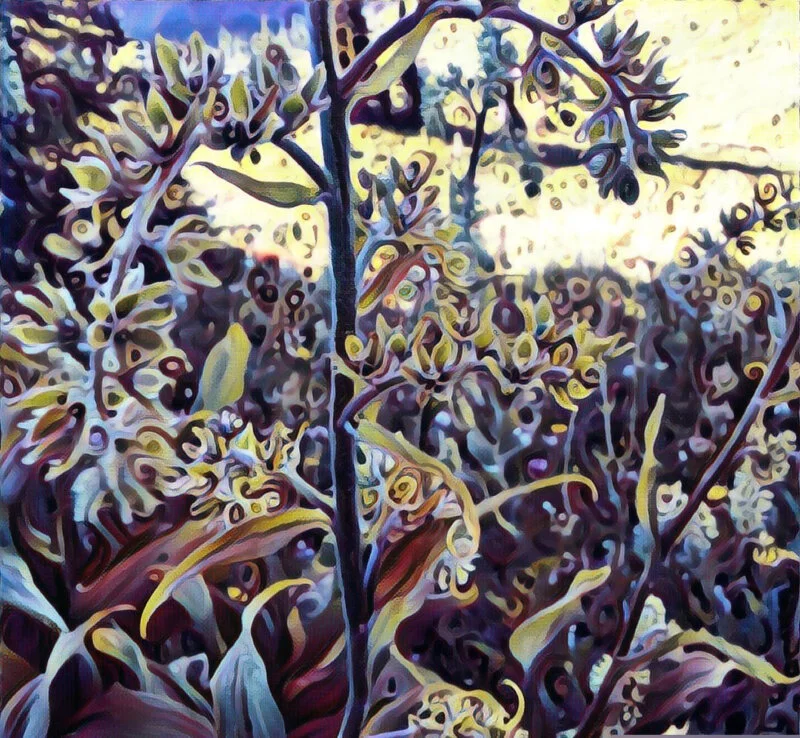For thousands of years, people from cultures throughout the world have worked with aromatic plants for healing, perfumes, cooking and for sacred medicine. We are often surrounded by aromatic plants in gardens and in forests. Think of roses, lavender, rosemary, daphne and jasmine that may grow in our backyard. Or think of walking through a forest of cedars, firs and pines. All of these aromatic plants and trees naturally exude “phytoncides”, volatile organic compounds that are enlivening, relaxing and healing.
All tagged herbs
Polyvagal Theory, Herbalism, Resiliency and Healing
Today we are experiencing epidemic levels of anxiety, depression and other forms of mental illness. Researchers have honed in on the usual culprits of stress, poverty, past trauma and oppression. But one scientist named Stephen Porges focused in on how humans process and adapt to severe stress and devised a new concept known as polyvagal theory. This theory shows how humans can engage and help each other to build nervous system resiliency, overcome stressors, and help us heal from trauma and emotional suffering.
The Nervous System
OK so lets dive into the nervous system and take a look at how it works. The nervous system has evolved and adapted to be able to manage and send information back and forth between the brain, the muscles, glands and organ systems. Much of that information consists of interpreting outside stimuli. managing threats, completing voluntary tasks involving the muscles and regulating the complex interchange of hormones and organ homeostasis.
Devil’s Club: Sacred Plant of the Northwest
This summer I spent quite a bit of time with a plant known as Devil’s Club (Oplopanax horridus) that grows wild in the northwest and up through the west coast of Canada to Alaska. If you have ever come across this plant you will never forget it. It grows upwards of 12 feet tall with a tall sharply thorned stalk and wide branching palmate leaves that are also lined with spiky spines. The stalks fall along the ground in snaky decumbent stems that criss cross each other before climbing up to the sky. In early summer, a raceme of greenish flowers bursts forth and then turns into a cluster of bright red berries. This is a big beast of a plant which inspires both awe and frustration depending on the person.
Kratom
In the last few years there has been an explosion in the use of an herb known as kratom here in the U.S. Kratom comes from a tree common to South East Asia where it has been traditionally used for centuries. Mitragyna speciosa comes from the same family of plants as coffee (Rubiaceae) and has been commonly used as a stimulant (in low doses), a sedative (in high doses), an analgesic, for its euphoric qualities, to reduce dependence on opioids, for increased concentration and to improve mood and wellbeing.
Mimosa- The Happiness Tree
Early this summer I realized my beautiful Mimosa tree was growing kind of out of control. This is an extremely fast growing tree that had risen to about 50 feet high and was intermingling its branches amongst the power lines. Time to prune. And since I was going to prune, this was also a perfect time to gather medicine from the bark.
Mimosa has been valued highly for centuries in traditional Chinese medicine as a botanical that can improve mood, wellbeing, decrease anxiety and bring a sense of peaceful calm, especially to those with a troubled heart and those who have experienced a great deal of stress and trauma. It is so highly valued that it is surprising to me that it hasn’t been appreciated more in the West and is relatively unknown outside of herbalist circles.
Mimosa “Full Happiness” Flowers
In a previous article I wrote about gathering bark from the Mimosa (Albizia julibrissin) tree to make medicine. Known as “He Huan Pi” in Chinese medicine, mimosa bark is renowned for its ability to “anchor the heart”, meaning that it helps stabilize emotions, brings gentle calm to the spirit and is helpful for those with anxiety, insomnia, symptoms of post traumatic stress and panic. In this article I will write about the amazing virtues of He Huan Hua, the flowers of the Mimosa tree. He Huan Hua translates literally as full happiness flowers.
10 Types of Healing Plants for Mental Health and Emotional Wellbeing
In this article I will be exploring many of the traditional ways that people have worked with plants to help heal from metal and emotional complaints. In reality any herb can be an “herb for mental health” . If one is struggling from chronic bronchitis, then lung herbs that help a person recover would impact their mood and overall wellbeing as well. Herbs that heal external wounds or improve kidney function or work on any level to heal physical maladies will spill over into improving mental health as well. But in this context I am focusing on herbal categories that traditionally are deeply helpful for emotional complaints such as anxiety, insomnia, stress and sadness.








